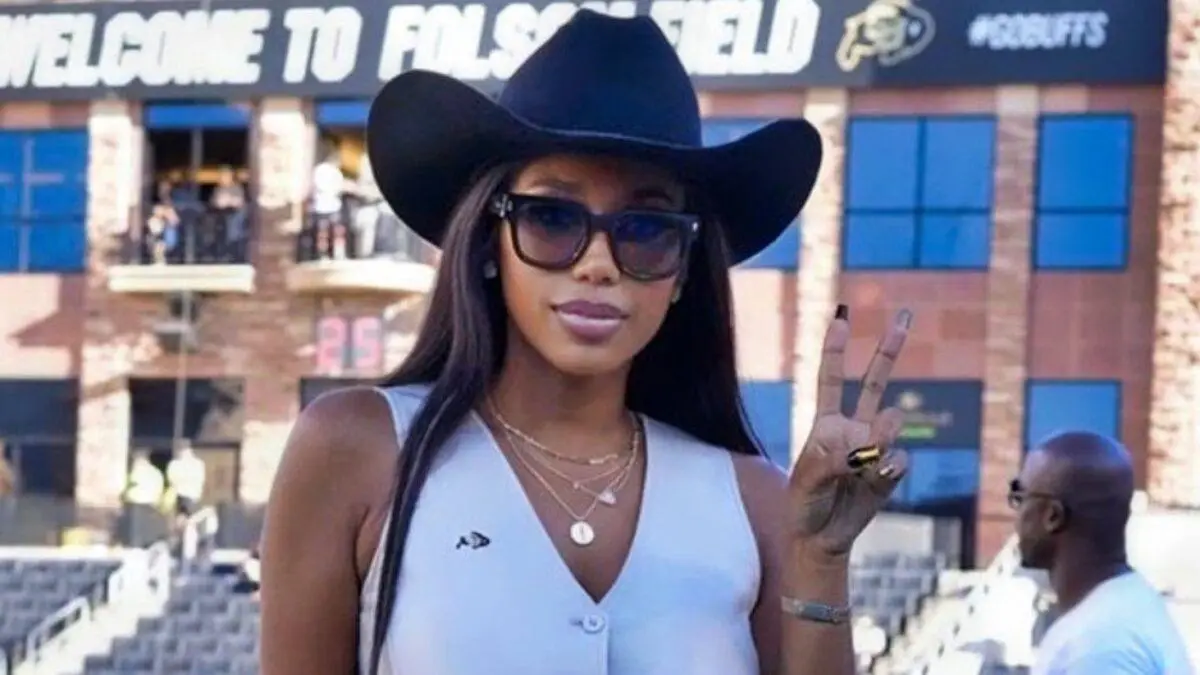Dr J Net worth: How He Built Wealth Across Sectors

What’s really behind dr j net worth? Is it all highlight reels and slam dunks, or is there something deeper powering the fortune of Julius Erving—the icon better known as Dr. J?
If you’re like me, maybe you’ve wondered how a legendary athlete’s earnings stack up when the final buzzer sounds.
Do those wild ABA days still ripple through his bank account?
Is “being Dr. J” enough to keep endorsement cash flowing long after hanging up the jersey?
This isn’t just about numbers—it’s about what happens when skill collides with opportunity at exactly the right moment in history.
Let’s dig into where this story really starts, why so many fans (and analysts) see Erving as both pioneer and powerhouse, and how those early years shaped everything that came next for dr j net worth.
Get ready—this isn’t your standard “sports money” tale.
It’s about influence, transformation, and one seriously high-flying impact on the game.
The Legacy Of Dr J: Early Years And Origins
Long before he was racking up millions or redefining professional basketball style, Julius Erving grew up in Roosevelt, New York—a community tight-knit enough that everyone knew “Julie” had hops.
Back then it wasn’t dollars but drive that set him apart.
Erving’s mother instilled discipline; playground courts taught him creativity.
On blacktops scattered around Long Island, young Julius crafted a reputation for athleticism that felt almost otherworldly—even before scouts were watching closely.
But here’s the thing:
- He wasn’t handed any golden ticket.
- His leap from neighborhood hoops to college stardom involved grit most kids would balk at.
- That relentless work ethic became foundational not only for his game but also for every income stream he’d later build off-court.
By high school graduation, local buzz already hinted: this guy might change things—not just win games but shake up expectations entirely.
That hype traveled with him straight into college ball.
UMass Days: Building Blocks For A Basketball Empire
Instead, Erving found himself in an era where stats—and star power—spoke loudest on their own terms.
From day one he played above the rim—literally:
| Stat Category | Average Per Game At UMass |
|---|---|
| Points Scored | 26.3 |
| Rebounds Grabbed | 20.2 |
| Total Games Played | 52 |
Those numbers aren’t normal—they’re astronomical even by today’s standards!
Within two seasons at UMass he not only filled seats but started breaking barriers on how big men could move and score.
All of which is to say:
Early evidence pointed to more than just pro potential; this was someone rewriting blueprints while barely out of his teens.
The funny thing about college ball in that era?
No instant fame or influencer status—just raw talent carving space for future riches both inside and beyond arena walls.
The Ascent To Pro Stardom: ABA Dunks And NBA Dominance Fueling Dr J Net Worth
Now let’s talk launch pads—the wild world of American Basketball Association (ABA).
Forget polished TV coverage; this league ran fast and loose…until Julius soared onto the scene with Virginia Squires and soon after New York Nets.
Here’s what made people take notice:
- Slam dunks weren’t common—Dr. J made them art.
- Crowds doubled wherever he played thanks to electrifying performances.
- Awarded multiple MVPs while revolutionizing wing play overnight.
His showmanship turned games into events—with ticket sales surging right alongside popularity (a clear boost for contract values).
When ABA merged into NBA?
New chapter—but same spectacle.
With Philadelphia 76ers,
Julius kept re-inventing expectations:
– Led team deep into playoffs season after season
– Snagged league MVP honors
– Delivered one gravity-defying highlight after another
Tablets may remember stats;
fans recall moments like baseline reverses no defender dared contest.
And yes—
those headlines translated directly to endorsement interest plus new negotiating leverage each year salary caps climbed higher.
- Nike dreams? Converse got there first—with signature shoes fueling sneaker culture years before Air Jordans dropped.
- Coca-Cola recognized charisma when they saw it—locking him down for campaigns targeting families nationwide.
What did all this mean for dr j net worth?
Simple math:
Star power multiplied by innovation equals lifetime value—a lesson younger athletes (and agents) study even now.
A Style That Changed The Game—and Influenced Earnings Forever
Ask around any old-school gym or modern analyst desk:
What actually separated Julius Erving from hundreds who dunked before?
The answer runs deeper than height or hang time:
- Smooth aerial control became both brand identity…and marketing goldmine.
- No-look passes plus acrobatic finishes drew fans far outside traditional markets—increasing personal licensing appeal over decades.
In short,
Dr. J fused artistry with efficiency,
making every possession must-watch entertainment—and proving charisma could be monetized just as much as championship rings.
For anyone looking to understand the roots of dr j net worth,
it pays to track not just points per night but cultural resonance earned along the way.
So whether you’re tallying trophies or chasing inspiration,
remember:
Success leaves clues—from playground flashbacks right through legacy-defining business ventures still paying dividends today.
Want sources? Check GoBankingRates’ deep dive using “dr j net worth” estimates between $30 million–$50 million—all built atop moves nobody else dared try until he showed them how.
Stay tuned—we’ll break down endorsements and investments next round.
Business Ventures and Investments: Dr. J Net Worth Beyond the Hardwood
When people talk about Dr. J net worth, it’s easy to focus on flashy slam dunks, but the truth is that Julius Erving’s financial legacy stretches far beyond his time on the court.
For anyone wondering what happens to sports stars after retirement—or how they really build generational wealth—Erving’s story reveals plenty.
All of which is to say, his business moves were never just a side hustle; they’ve been core to cementing his long-term financial stability.
Post-retirement, Erving didn’t fade away like so many ex-athletes do.
He jumped into entrepreneurship with a quiet confidence, snapping up opportunities where others might see risk.
The upshot?
He once owned a Coca-Cola bottling plant in Philadelphia—a play that shows he wasn’t afraid to get his hands dirty in big-time industry outside basketball’s orbit.
That kind of investment isn’t your typical ex-player car dealership gig; it’s serious business, requiring both capital and vision.
Brand endorsements have also played an outsized role in expanding Dr. J net worth over the years.
Think Converse during his ABA and NBA heyday—not just lacing them up but starring in major ad campaigns.
Later came deals with Spalding and Coca-Cola itself (before he even bought into their plant), showing how licensing agreements can generate income long after someone hangs up their jersey.
These aren’t one-off checks; ongoing royalties from classic ads and branded gear add a steady drip of revenue for icons whose images remain evergreen.
Real estate has always been a reliable landing pad for athlete wealth—and yes, Dr. J was no stranger here either.
While specifics on each property move are hard to pin down (he keeps things private), it’s clear real estate forms another plank in his portfolio diversification strategy—insulating him from the wild ups and downs of other markets or any single failed venture.
- Sports-related businesses: Don’t forget those too—like clinics, consulting gigs, or investments tied back to hoops culture itself.
- Diversification: It’s not all eggs-in-one-basket stuff with Erving. He spreads bets across industries—from consumer brands to appearances and speaking circuits.
The funny thing about celebrity athletes chasing business success? Not everyone sticks the landing—but Julius Erving built out more than just nostalgia-driven cash-ins or autograph sessions at card shows.
Each deal seems calculated for endurance rather than flash; you could call this “long road” investing versus trying for quick hits.
And when folks ask if post-career riches are luck or skill… look at how carefully Dr. J positioned himself as both legend and entrepreneur: never resting on fame alone.
In short: His off-court game may be every bit as sharp as anything he did above the rim—and it keeps driving that net worth skyward even decades later.
All of which makes you wonder why more former stars don’t follow suit—and reminds us there’s plenty more behind those headline numbers than old highlight reels suggest.
Net Worth Analysis and Financial Success: How Dr. J Built Lasting Wealth
Ask around—how much is dr j net worth, really?
Fans want numbers, skeptics want proof, rivals wish they’d made similar moves themselves.
Most estimates peg Julius Erving somewhere between $30 million and $50 million these days according to sources like GoBankingRates.com (leaning high) and Celebrity Net Worth (a little more cautious).
But let’s dig deeper: What makes up that mountain of money?
And why does it seem so durable compared to fortunes lost by less careful contemporaries?
– Basketball Salaries: Back when contracts weren’t nearly as bloated as today’s max deals, Erving still pulled top dollar in both ABA and NBA eras. Star status means star paychecks—even if historical records from the Virginia Squires era get fuzzy around exact figures.
– Endorsements & Licensing: Those iconic commercials? Still paying out thanks to timeless brand association. Imagine new generations wearing retro kicks because their dads saw Doc glide through the air—that kind of cultural cachet lasts way longer than any three-year sneaker deal ever should.
– Business Profits: Owning part of a major bottling operation isn’t just good press—it’s recurring revenue from real-world sales. Factor in assorted stakes in other ventures (some public, some private), plus fees for speaking engagements or memorabilia signings—this side hustle becomes main hustle pretty fast.
All of which is undergirded by strategic financial management—the boring backbone beneath splashy headlines about spending sprees or luxury toys elsewhere among former pros.
| Earnings Stream | Description/Example |
|---|---|
| Court Salary History | $3M-$4M+ cumulative career salary (adjusted for inflation) Top-paid player status throughout ABA/NBA tenure |
| Shoe & Brand Endorsements | Tens of millions lifetime Converse, Spalding ads & legacy royalties |
| Bottling Plant Business Profits | No precise public data but seen as significant asset sale/income driver |
| Appearances/Speaking Fees | $5k-$20k+ per event (industry averages) |
| Name/Likeness Royalties | Adds consistent annual income via merchandise/licensing deals |
Where does philanthropy fit into all this?
It turns out giving back plays its own part—not only in reputation building but sometimes smart tax planning too.
Dr. J has long supported youth programs, scholarships, community development projects; while details are often low-key by design rather than splashy PR stunts, you’ll find stories scattered through local press recounting how much difference those dollars make off the stat sheets.
So what separates lasting wealth from fleeting fortune?
To some extent it comes down to philosophy:
Rather than betting everything on one late-career comeback or rolling dice on risky startups (“moonshots,” as Silicon Valley types say), Erving goes slow-and-steady:
– Diversify early
– Leverage personal brand wisely
– Keep overheads realistic
– Give back generously without turning charity into publicity stunts
This approach helps insulate against market swings—or sudden lifestyle changes that trip up too many ex-stars chasing yesterday’s highs.
The problem is there are no guaranteed blueprints—but if you’re looking for clues on what gives a sporting legend financial staying power well past their last basket?
Start by following someone who treats every endorsement check or equity stake with respect—not just another score but part of something bigger: A foundation that outlasts any one season…or era…or highlight reel dunk.
That may be why dr j net worth remains not only impressive—but relevant—in conversations about athlete wealth done right.
Personal Life and Lifestyle: What Does Dr. J’s Net Worth Really Mean?
Why is it that everyone wants to know not just the size of Dr. J’s net worth, but how he actually lives? The money headlines are everywhere – $30 million, $50 million – but there’s a human side most people miss. So let’s cut through the noise and get into what matters: family ties, living standards, luxury choices, media buzz, and those moments when Julius Erving steps up to the mic.
Family life for Dr. J has always been more than background noise—it shaped his entire approach to success. Raised in Long Island by his mother after losing his father young, he learned early about resilience and community support. Relationships haven’t always been smooth—he’s faced public scrutiny over personal matters—but he’s also built strong bonds with his children and keeps close ties with family even as fame grew.
All of which is to say: a headline number doesn’t tell you if someone’s happy or fulfilled.
- Assets: Houses? Yes—the kind you’d expect from basketball royalty.
- Business ventures: He once owned a Coca-Cola bottling plant in Philly—a move you’d only make if you had an eye for long-term plays beyond endorsements.
- Lifestyle: Not flashy on social media, but ask anyone who’s seen him at events—there’s understated class in everything from tailored suits to collector cars.
Here’s the upshot: Luxury isn’t just about Ferraris (though there have been some sweet rides); it’s about being able to show up anywhere—whether courtside or boardroom—and look like you belong.
Media appearances? Even decades out from dunk contests, Dr. J pops up in documentaries, ESPN interviews, NBA All-Star weekends—you name it. But unlike some retired athletes chasing every spotlight, Erving picks his spots carefully; when he speaks publicly—whether on sports leadership panels or at business conferences—it tends to matter.
Legacy and Continued Influence: How Dr. J Net Worth Fuels Basketball and Business Today
So where does all this money go—not just physically but in terms of impact? That’s where “legacy” stops being a cliché and starts having real teeth.
Julius Erving changed how modern basketball looks—even now. His above-the-rim creativity set the template for generations; Michael Jordan called him an inspiration for good reason. Today’s highlight reels still echo those first windmill dunks.
But here comes the funny thing about athlete wealth: It rarely stays inside gym walls anymore. Erving helped blaze that trail too—showing players they could be more than shoe commercials by investing off-court (think Magic Johnson later on). Owning businesses (the Philly Coke plant), dabbling in real estate…for many current stars, that’s straight out of Dr. J’s playbook.
The trophy case basically groans under its own weight:
– NBA Champion
– ABA MVPs
– Multiple All-Star nods
– Hall of Fame induction
All of which is to say: respect goes way beyond bank balances.
Even now, “Dr J net worth” trends any time he shows up at a major event or signs another licensing deal.
He still draws fees for speaking gigs—sports summits love him for perspective that spans pre-merger chaos right through global brand-building.
You’ll spot his signature on sneakers or collectibles selling worldwide—the man IS a walking legacy contract.
The problem is assuming these numbers stand still; market shifts mean investments go up or down (real estate especially). But one constant remains: whatever projects Dr. J touches carry instant credibility among fans AND entrepreneurs alike.
Current activities include mentoring younger athletes on entrepreneurship—which sounds simple until you realize how few can do it without preaching.
The broader influence? Every player who launches their own label or jumps into tech startups owes something to pioneers like Erving.
The upshot is clear:
“Dr j net worth” means more than dollars earned—it’s shorthand for transformation both inside basketball culture and out.
And no matter how asset values shift behind closed doors, legacy value keeps climbing as new generations watch old highlights…and take notes.







